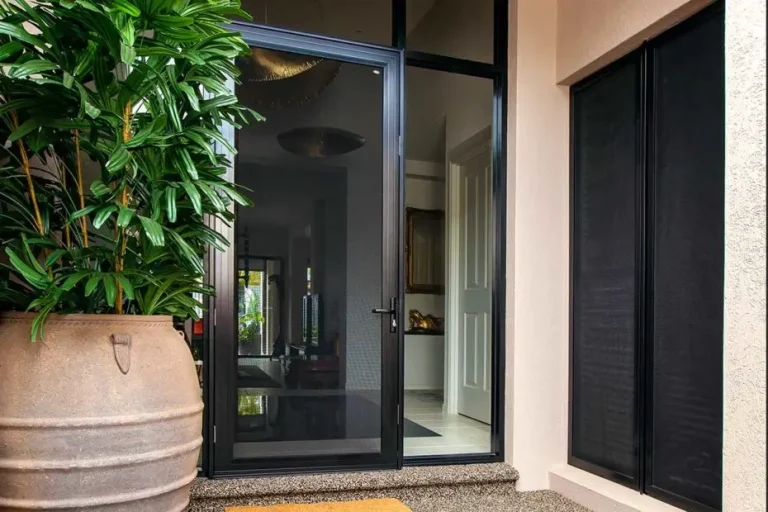A common issue faced by homeowners in public housing like HDB flats in Singapore is water pipe leaks. These leaks can occur unexpectedly and cause considerable disruption if not addressed promptly. An HDB water pipe leak can lead to significant damage to your property, higher water bills, and even potential structural problems if left unchecked. This article delves into everything you need to know about HDB water pipe leaks, including their causes, how to detect them, and the best solutions for repair.
What Is an HDB Water Pipe Leak?
An HDB water pipe leak occurs when water escapes from a damaged or faulty pipe within the water supply system of a flat. These pipes are typically hidden behind walls or under floors, making the leak difficult to detect initially. However, the consequences of an untreated leak can be severe, including water damage to furniture, flooring, and structural elements of the home.
Water leaks can happen for various reasons, and understanding these causes can help homeowners prevent or quickly address leaks when they occur.
Common Causes of HDB Water Pipe Leaks
Water pipe leaks in HDB flats can arise from numerous factors. Knowing the most common causes will allow homeowners to take preventive measures and respond more efficiently when leaks occur.
1. Aging Pipes
As HDB flats age, the plumbing system, including water pipes, can deteriorate over time. The pipes used in older units may be more prone to corrosion, cracks, or joint failures. Rusting pipes lose their integrity, and water pressure can exacerbate the problem, leading to leaks.
2. Poor Installation
Improper installation of water pipes during the construction of the flat or renovations can lead to a greater risk of leaks. Pipes that are not fitted correctly or sealed can develop weak spots that eventually leak water. Over time, these installation flaws can become more apparent, often resulting in hidden leaks behind walls or floors.
3. High Water Pressure
Excessively high water pressure can cause significant strain on the pipes in your HDB flat. Over time, this pressure can lead to cracks or ruptures in the pipe material, especially at weak points. If your water pressure is too high, it can increase the risk of a water pipe leak, making routine checks essential for maintaining safe water pressure levels.
4. Temperature Fluctuations
Sudden changes in temperature can cause pipes to expand and contract. These fluctuations in temperature are particularly common in areas with extreme weather conditions, such as hot and humid Singapore. Over time, this continuous expansion and contraction can weaken the pipe material, increasing the likelihood of leaks, particularly at joints or fittings.
5. Accidental Damage
Accidental damage during renovations or repairs within your flat can also cause water pipe leaks. If workers inadvertently damage the pipes while drilling, hammering, or performing other activities, the pipes may develop leaks, especially if the pipes are concealed behind walls or floors.
Signs of an HDB Water Pipe Leak
Detecting a water pipe leak early can help prevent significant damage to your home. While water pipe leaks in HDB flats are often concealed, there are several signs that may indicate a hidden leak. Homeowners should be aware of these indicators and take action immediately when they notice any of the following:
1. Increased Water Bills
One of the most common signs of an HDB water pipe leak is an unexplained increase in your water bill. A hidden leak, no matter how small, can cause a steady loss of water over time. If you notice a sudden rise in your water bills without any obvious reason, it’s important to check for leaks.
2. Wet or Damp Walls and Floors
If you notice damp spots, wet patches, or water stains on the walls or floors, it’s a sign that water is leaking somewhere behind the surface. This could be a result of an HDB water pipe leak. Pay attention to areas where pipes are hidden, such as bathrooms, kitchens, or near water fixtures.
3. Musty Odors or Mold Growth
Water leaks provide the perfect environment for mold and mildew growth. If you detect a musty odor in certain rooms or notice mold forming on your walls, this could be due to a hidden water pipe leak. The continuous dampness encourages mold growth, which can be harmful to your health.
4. Low Water Pressure
A decrease in water pressure throughout the flat can indicate a significant leak in the plumbing system. If water is leaking out of the pipe, it means less water is available to reach your faucets, showers, and appliances. This can result in noticeably low water pressure when using water fixtures.
5. Sound of Running Water
If you hear the sound of running water, even when all taps are turned off, it could indicate a water pipe leak. This often occurs when the leak is near an area where the water is still flowing through the pipe. If you hear such sounds consistently, it’s crucial to investigate further.
How to Detect an HDB Water Pipe Leak
While it can be challenging to detect concealed water pipe leaks, there are methods that can help identify their location. Professional plumbers or experts often use specific techniques to pinpoint leaks without causing unnecessary damage to your walls or floors.
1. Water Meter Reading
One of the easiest ways to detect a water pipe leak is by using the water meter. Turn off all water fixtures in the flat, and then take a reading of your water meter. If the meter continues to register water usage, even though no water is being used in the flat, it’s a clear sign that there is a leak in the system.
2. Thermal Imaging Cameras
Thermal imaging cameras can be used to detect temperature variations caused by water leaking from pipes. These cameras allow professionals to view hidden leaks by identifying areas that are cooler or warmer than the surrounding environment. This method helps pinpoint the exact location of the leak.
3. Acoustic Leak Detection
Acoustic leak detection uses sensors to pick up the sound of water escaping from a pipe. These sensors can detect even the faintest sound of water flowing, allowing professionals to locate leaks in hard-to-reach areas without any damage to walls or floors.
How to Fix an HDB Water Pipe Leak
Once a water pipe leak is detected, it’s crucial to fix it promptly to avoid further damage. Here are the general steps involved in repairing an HDB water pipe leak:
1. Turn Off the Water Supply
Before starting any repairs, it’s essential to turn off the main water supply to your flat. This will prevent additional water from flowing through the pipes and causing further damage.
2. Locate the Leak
If the leak is hidden behind a wall or floor, you may need to remove a section of the surface to access the pipe. Professionals often use specialized tools, such as thermal imaging cameras, to locate the exact source of the leak.
3. Repair or Replace the Pipe
Depending on the severity of the leak, the affected section of the pipe may need to be repaired or replaced. If the pipe is cracked or corroded, it’s best to replace the damaged section to ensure a long-lasting solution.
4. Seal and Restore the Area
Once the pipe has been repaired, the hole or gap in the wall or floor should be sealed. The area will need to be restored to its original condition, and the water supply can be turned back on for testing. Ensure that there are no further leaks before fully restoring the area.
Preventing Future HDB Water Pipe Leaks
To avoid future water pipe leaks, it’s essential to perform regular maintenance on your plumbing system. Here are some preventive measures you can take:
1. Routine Inspections
Have your plumbing system inspected periodically by a professional. This can help identify any potential issues before they turn into significant leaks.
2. Maintain Water Pressure
Ensure that the water pressure in your flat is within the recommended range to prevent excessive strain on your pipes.
3. Avoid Overuse
Excessive use of water fixtures, such as taps or showers, can put stress on the pipes. Be mindful of your water usage to prevent unnecessary strain on your plumbing system.
Conclusion
HDB water pipe leaks are a common but serious issue that every homeowner should be aware of. Prompt detection and timely repair are essential to prevent significant water damage and structural issues. By understanding the causes, signs, and repair methods of HDB water pipe leaks, you can ensure that your plumbing system stays in good working condition for years to come. Regular maintenance, early detection, and professional help are the keys to avoiding costly repairs and keeping your home safe and dry.









